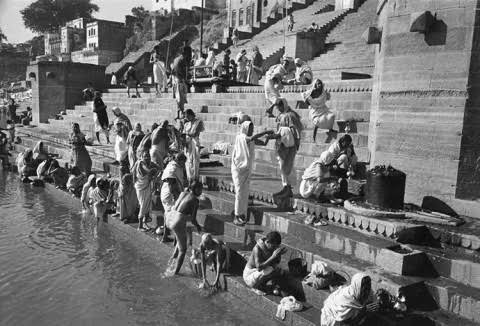How Britishers demean Vedic Culture?


Britishers misrepresent and demean the Vedic tradition in the worst way possible way. Along with enforcing the British educational system, this caused the general public to lose national awareness and pride. They no longer recognised that India’s well-being is to their benefit, their own upliftment, and a bright future.
The destruction of India and its culture, whether brought about by the British, Muslims, or anyone else, is their own. When this happens, as it did with the Indian invaders, the people become self-centered, and corruption sets in.
The higher and more spiritual Vedic values are lost, and the nation displays disunity, untruth, confusion, chaos, and quarrel. This is becoming more common in India with each new generation, owing to the loss of culture. Though some of Indians’ national pride in their country and Vedic tradition has returned, bringing, for example, the highest teachings of Lord Rama and Lord Krishna, much of India’s cultural heritage has slipped away.
In addition, the British destroyed or collected all Sanskrit books they could find. These included numerous local historical records from India’s various kingdoms, as well as important Puranic and Vedic literature. Many of these editions could be found in the great library.
The British could then fabricate a false history that justified whatever account of the past they wanted to provide, such as the dates of the compositions of the Vedic texts, the dates of archaeological finds, the later times of the Harrapan or Indus civilization, and so on, by destroying many of these local history books. Thus, the fact that the Mahabharata War occurred as early as 3139 BCE would be another piece of history that would make it easier to convince people that the great epics, such as the Mahabharata, Ramayana, and other texts, were nothing more than fables and myths. This was just another way to denigrate the Vedic tradition.
Even today, those educated in English schools unknowingly refer to these texts as myths and legends, implying that they are merely folktales with little substance or truth.
Another thing that was done was that they began changing portions of the Sanskrit texts, such as with H. H. Wilson’s translation of the Vishnu Purana. This process also led to the deception of some Indian writers and scholars. The original texts would then be destroyed once specific changes were made or passages and verses were added, often with the effect of diminishing the good qualities of some of the main characters in the books. They would then publish the new editions and maintain control.
Other parts of manuscripts, such as those describing specific rituals, may be complete fabrications, misleading people about what would have been strict codes of conduct or rituals to be performed. This is also why it is difficult to find Sanskrit texts in India that were published before 200 years ago, particularly in Smriti literature. Such books, which we can still find today, can indeed mislead people in understanding their once lofty nature.
Further evidence is provided by a suggestion made by William Jones to Warren Hastings, the Governor General of India, that one way to destroy the Indian people’s faith in the Vedic texts was to create a Sanskrit scripture that elaborated on the glories of Jesus as if it were part of the Vedic tradition. Another plan was to translate one of the biblical Gospels and the prophetic book of Isaiah into Sanskrit in the style of an ancient Vedic text and include false prophecies about Jesus in order to deceive people.
The next step would be to distribute them in British educational institutions in order to increase their credibility. This would allow people to be further diverted away from true Vedic traditions and towards Christianity. This demonstrates the deceptive methods they considered and used to try to end the true nature of Vedic culture and bring the people under the control of their own religion. The British were forced to resort to such ideas because they recognised that Christianity alone was not attracting people to something higher than what they already had in their Vedic tradition.
DISCLAIMER: The author is solely responsible for the views expressed in this article. The author carries the responsibility for citing and/or licensing of images utilized within the text.
